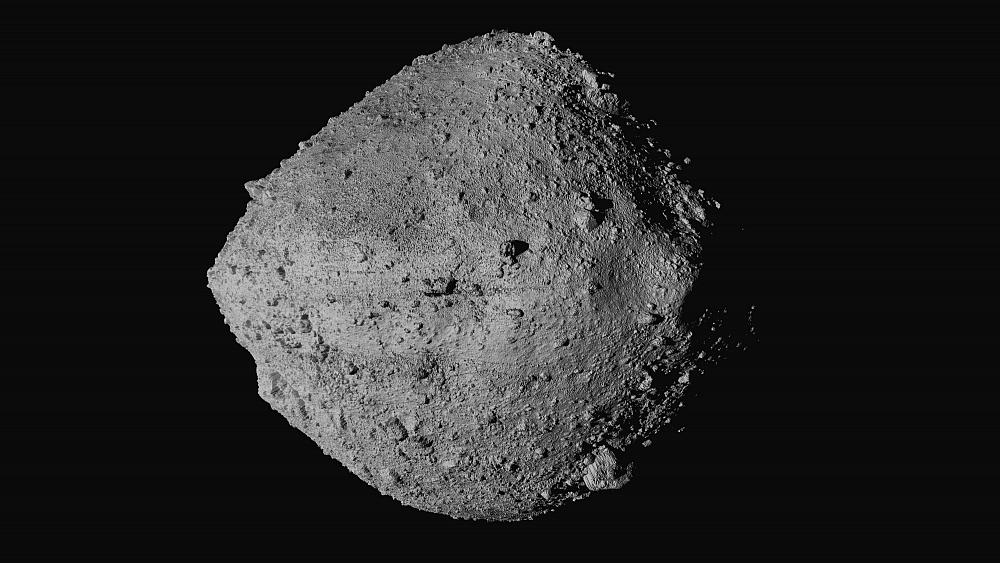
A NASA spacecraft successfully made a brief stop on an asteroid 200 million miles from Earth to collect a sample from its surface, officials have confirmed.
“Touchdown declared,” one flight controller announced to cheers and applause early on Wednesday. “Sampling is in progress.”
The Osiris-Rex craft was attempting to collect a handful of rubble from the asteroid Bennu, which scientists say contains the building blocks of our solar system.
It dropped out of orbit late on Tuesday and began a four and half hour descent to the boulder-covered surface of the space rock.
But it could be a week before scientists know how much, if much anything, was grabbed and whether another try will be needed.
If successful, Osiris-Rex will return the samples to Earth in 2023.
“I can’t believe we actually pulled this off,” said lead scientist Dante Lauretta of the University of Arizona.
“The spacecraft did everything it was supposed to do.”
It was the USA’s first mission to gather samples from an asteroid, something Japan has accomplished twice.
The coronavirus pandemic had resulted in a two-month delay in the attempt.
It was never intended for Osiris-Rex to making a landing, because Bennu is a tiny at just 510 metres across and its gravity is too low.
Instead, the plan was for the spacecraft to reach out with a robotic arm and collect between 60 grams and 2 kilograms of material.
After nearly two years orbiting Bennu, the spacecraft picked a location containing the biggest patch of particles small enough to be swallowed up.
Such Osiris-Rex’s distance that the mission was already over by the time flight controllers near Denver, Colorado heard it had begun: it takes 18 and a half minutes for radio signals to travel between Bennu and Earth.
The mission, which cost over €675 million, started with a launch back in 2016.
For more on the importance on the potential finds of this mission, watch the video player above for Euronews science reporter, Jeremy Wilks’ in-depth explanation.
Related posts:
Views: 0
 RSS Feed
RSS Feed
















 October 21st, 2020
October 21st, 2020  Awake Goy
Awake Goy  Posted in
Posted in  Tags:
Tags: 
















